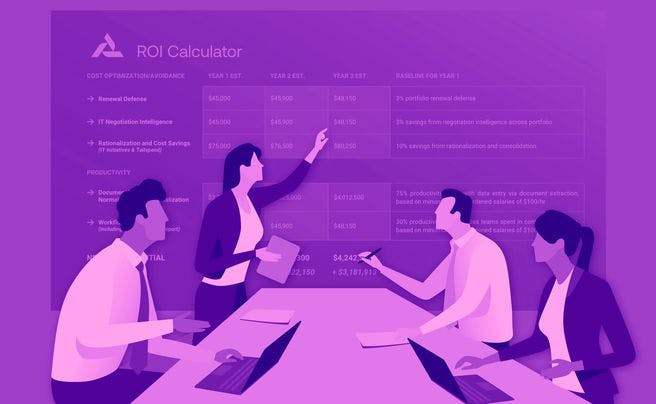Anyone who's played with Legos knows the endless possibilities to create and the influence they have on the imagination. Today, you can buy lego sets for a specific build or go old school and buy bulk pieces for your own creations. While both activities lead to different outcomes, the blocks are the common link between any outcome.
How does this Lego story relate to vendor intelligence and VRM?
The role of Sourcing, Procurement, and Vendor Management (SVPM) is evolving as companies continue to realize the value and impact that sourced inputs have on output. In my 15+ years in various SPVM roles, I’ve seen the role change from a focus on cost savings to higher expectations, including driving value through innovation, flexibility, redundancy, diversity and sustainability. Building stronger relationships with vendors through a data-driven approach is essential to achieving these higher-level, more aspirational goals of SVPM.
The best way to strengthen relationships and improve value is through tech-enabled vendor relationship management (VRM) or supplier relationship management (SRM). The concept of VRM for sourcing roles is similar to deploying a customer relationship management (CRM) system to enable a sales team. Like those Legos, the outcomes are different, but building a great VRM has a lot of similar building blocks as creating a great CRM. The difference is that CRM needs to be fundamentally designed for the sales organization trying to deliver revenue and VRM needs to be built from the ground up to allow CIO and CPO organizations to intelligently purchase.
Why do these relationships matter? Well, if we’re talking about selling, I think the business world has accepted for a long time that relationship selling is the key to B2B sales and driving revenue. A similar investment in relationships is a newer concept in the SVPM side of the handshake. Research shows that managing all aspects of existing or prospective vendors by creating closer, more collaborative relationships is the best way to maximize value. Major benefits of better relationships include: improving trust, increasing accountability post sale through to delivery, reducing risk, increasing agility and managing total cost.
Level Playing Field?
A conversation I’ve had with many of my SPVM peers usually includes a statement like this:
“Sales people have CRM tools. They kill us with pricing tools and enter every deal cycle with detailed strategies, goals and tactics. It feels like there is a squadron of stealth bombers coming at us and we have flintlock muskets. Sales teams are supported by sales engineers, product experts and security experts all working together. We have to manufacture knowledge a deal at a time and our cross functional procurement teams are nowhere near as integrated or collaborative as the selling teams coming at us. I see that we have more leverage when we can pull together more data and work more collaboratively on our side, but we rarely pull this off and when we do collaborate deal cycles can drag on for months on end.”
Candid conversations like this illustrate the obvious - SPVM teams need better tools to get more out of strategic vendors during a deal cycle and throughout the vendor management lifecycle. Vendor intelligence is knowledge and someone wiser than me said “knowledge is power”. In this regard, VRM delivers. it’s a platform, which aggregates and enriches your organizational data on vendors and suppliers. It formalizes processes, it connects cross-functional teams, it exposes data that is otherwise siloed, it tracks every organizational touchpoint with the vendor, it maps out who the people are and what they touch.
VRM takes loose lego blocks - performance, existing contracts, existing product inventory, internal NPS, short and long-term performance, financial performance, benchmarks - and organizes the building blocks into groups by their respective colors. By arranging the blocks with a VRM, you can build a stronger picture of the overall vendor relationship and uncover opportunities by having a more even handed exchange during and between deal cycles.
My first hand experience confirms that vendor intelligence is what's needed in order to make better business decisions during procurement cycles and throughout vendor management lifecycles. Poor SPVM performance - the deals you wish you could take back - are usually driven by three root causes: 1) information asymmetry between the vendor and the buyer, 2) poor cross functional collaboration on the buyer team, and 3) low correspondence between organizational strategic goals and procurement cycles.
 The Lego Blocks of Data
The Lego Blocks of Data
Any seasoned SPVM professional knows the value of supplier data; it’s critical to successful negotiations, yet it’s elusive. Imagine being given a bucket of lego pieces and told to build a house without any instructions or what kind of house to build. In some cases, we’re even given an empty bucket and step one is to try to find the data we need to get started. With a strong enough imagination, some experience, a few mistakes and time anyone can build a house. But is this what we aspire to? For too long, procurement has been the preserve of tribal knowledge and trial and error instead of a systematic, data-driven process that puts relationships on center stage.
Enterprises possess valuable data. Too often, they have no way of making effective use of it because it’s distributed across so many different departments, functions and applications. During my career I have used ERP, P2P, address book, network drives, and office productivity applications, such as MS Excel. Wrestling multiple stakeholders and applications to access and analyze spend, contracts, renewal schedules, products, services, quotes, goals and so on is inefficient, time consuming and annoying. These challenges call out for a solution and that solution is VRM
VRM: The Platform of the Future
In order to win, SPVM professionals need their own customized CRM, they need a VRM. This is the central insight that compels us at Terzo.
Terzo’s VRM brings your people and your data together. It also connects you to your vendors and other applications that house valuable data and supporting processes. In this way, Terzo serves as the vendor people, process and data hub for the enterprise. It’s more than just a data lake with a nice visual on top of it. It doesn’t take an army of consultants to implement. It’s a no-code platform built for the front lines, which can also deliver reporting and analytics to the C-suite. It standardizes and streamlines request intakes, pipeline and workflow management, performance and sentiment analysis, and contracted commitment vs your actual spend.
SPVM professionals - once you’ve experienced Terzo, you are not going to want to go back to the status quo. Contact us today and let us show you how Terzo can get you past finding and sorting the Lego blocks and on to winning builds!




